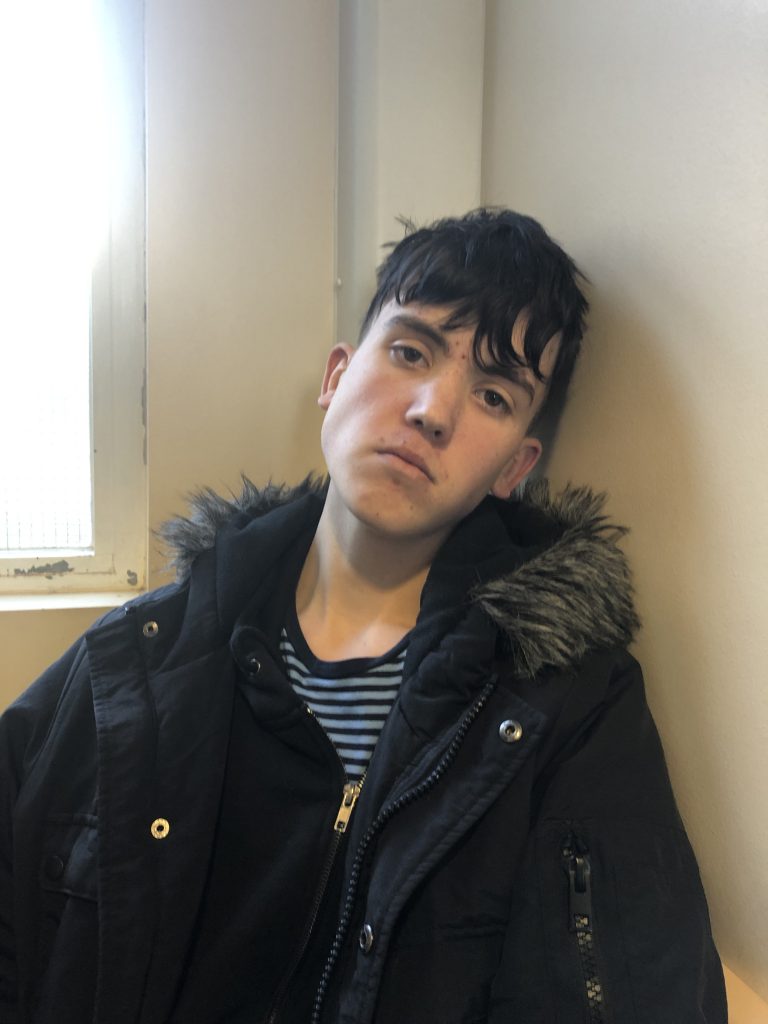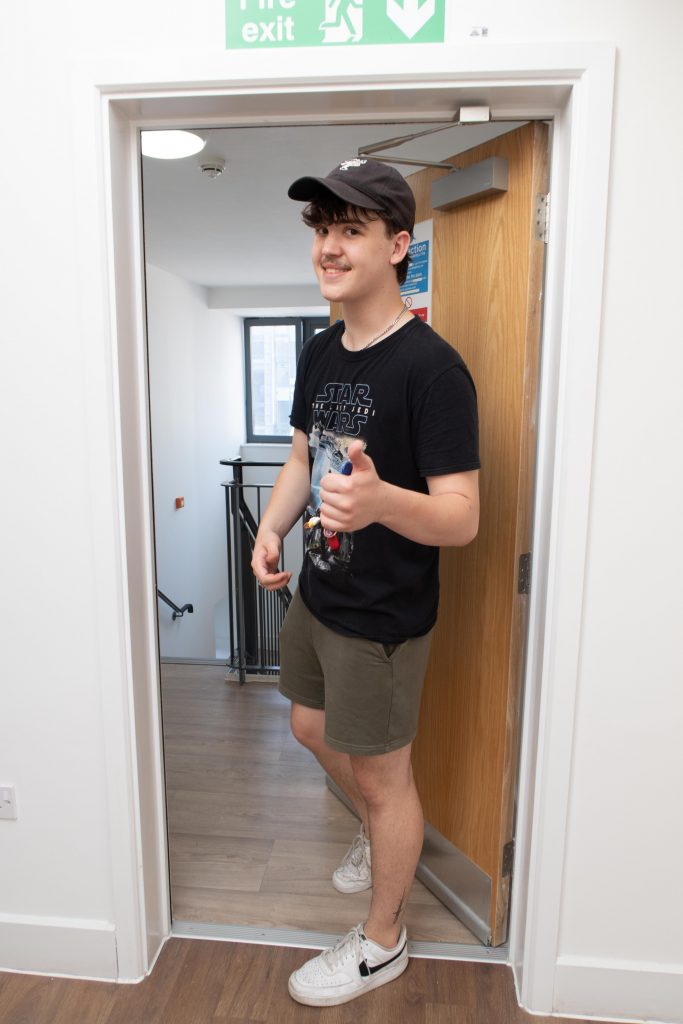For the seminar on Friday in Week 7 we were given the task to go and find a pair of images based upon our understanding of Barthes’ Studium and Punctum definitions from his book Camera Lucida.
The task set by Alice was:
• Find a studium
A photograph that interests you, which is coded.
Liam Wong’s “Taxi Driver” / 00:00:59 from his book TO:KY:00 is my pick for a picture to fit into the Studium category.

This image sits alongside many other nighttime photos from around Tokyo in this amazing book and depicts a taxi driver waiting for his fare outside a “Love Hotel” in the red light district Kabukicho.
My attention is initially drawn to the face of the driver with his patient manner evident, then the symbols in the lighted sign in the windscreen. A quick investigation into these symbols shows that the driver is waiting for the fare to be settled by the passengers, hence the door being ajar whilst they sort out the money to be paid. This is an amber light and counterintuitively a Red light in the window means the cab is available to hire, whilst a green sign indicates it’s in use and unavialable.
This light in the windscreen and the small dome light on the roof of the car indicate it is a taxi. The language in the sign is a clue to where the location is and the seat covers might provide a clue that this isn’t a usual family car and outing. The driver is wearing a suit and tie also which shows he is at work. The background of the image, the reflections of the lights in the rain soaked alleys and the roof and bonnet of the vehicle tell us it’s a wet night in what looks to be a city. The bikes in the rack to the right side of the image also indicate a strong use of cycles in the area.
For me this image holds no punctum with which I am pricked, wounded or bruised and the image could be classed as “inert” in Barthes’ words. It’s an interesting image to let the eye wander through and investigate each detail but it could be walked past as there is no initial strong impact. To me at least.
If I were a Japanese taxi driver or a paying customer of the taxi service I might find it more stirring and even emotional. As in Barthe’s book, Camera Lucida “The Studium is of the order of liking” and nothing really more moving than this. It’s true in the case of this photo for me, I do “like” looking at it and seeing all of the wonderful details that Wong has captured in one of his earliest photographs of the city and the book.
As you will read from the Punctum section following, it does not garner a significant response from me like the image does below.
• Find a punctum
Locate a photograph that ‘pricks’ you and reflect upon it.
During our seminar Alice, our lecturer shared an image that provoked an immediate emotional response in her and it was clear to see the impact. She asked us to select an image that affects us in a similar way, it could bring forth feelings of unending joy or sadness, as long is it pokes us and makes us have a reaction.
For me no other picture I have ever taken wounds me as much as the following image Ewan in February 2019.

This is an image of my son at the age of 15 in the hospital waiting room at the Royal Shrewsbury Hospital. The same hospital he was born in, became the scene for what was a particularly upsetting period. Ewan, in his final year of school and doing well, started losing weight and having trouble generally with his health. Unbeknown to us the symptoms of drinking a lot of fluid, and getting rid of it again by urinating, losing weight, feeling fatigued, not sleeping, having trouble eating and concentrating on his studies were obvious. Had we been looking at someone else’s child we might have had an inkling of the issue but as the problem had steadily grown in our daily gaze we did not.
It resulted in us taking Ewan to A&E when we thought his legs looked too thin and we were unable to get him to stand up, thinking there must be an issue. Upon arriving and being asked to wait to be seen I took this image to document his gaunt face, worn out eyes and thin neck. His coat and several layers hid how much weight he’d lost recently. The sadness on his face brings back a sadness in me when I see it. Upon going into Triage the first nurse who saw him asked to smell his breath which smelled acidic like pear drop sweets, and expressed that she knew what this was.
Our son was thus diagnosed as Type 1 Diabetic and had been suffering from Diabetic Ketoacidosis (DKA), which meant that his body was using reserves of energy from his muscles and fat due to not having insulin to process the glucose he had been eating and drinking. This process releases Ketones into the bloodstream which can be extremely dangerous to the patient, and life threatening.
All of the emotions from this massive bombshell dropped upon him and us as his family are stored in this image and when I look at it I consider how horrific this time of our lives was and how Ewan’s life was changed forever.
The questions, Why this has happened now? Why Ewan? Why our family? Was it something we did wrong? Why didn’t we spot it? Did he almost die? all bounce around in my mind when I consider his diagnosis and this image in particular. It reminds me of wishing I could have been able to take this away from him, even if it meant suffering from it myself in his place.
It marks the start of an epic journey that he has begun and is doing really well with managing. He’s not alone, there are approximately 400,000 people in the UK living with Type 1 Diabetes and thanks to the NHS staff who looked after him in the early days he’s bounced back to better health. It’s a worry for us as parents, even though he is a 19 year old man now and with the continued support from the NHS Diabetes team he’s been able to get funding for an insulin pump and constant glucose monitoring system that allows him to live a life without constant finger pricking and injections.
The image is a reminder to us of how ill he was at the time and it’s seriously upsetting until you remember that he’s doing much better now. He’ll always have type 1 but he’s better able to manage it effectively.
In terms of the Punctum and emotions that this image elicits from me, I feel that it falls way outside the Studium category of imagery that I previously looked at in Liam Wong’s image. Although, this might only be the case for me, members of my family and friends, others might see it as a photograph of someone who looks sad or tired. There is no coded information in the photograph that informs the spectator of where the image was taken, why it was taken and who the subject is.
There is no doubt that this image pricks, wounds or bruises me more than any other photograph I’ve ever seen. There are some horrific images that capture important details from history such as Nick Ut’s “The Terror Of War” in which we see children, burned and in obvious pain, fleeing a napalm attack in the Vietnam war. Images of concentration camp victims from the holocaust, photos and videos captured on during the 9/11 terror attacks and other terrible tragedies that befall the human race all affect me when I see them. It would be monstrous to not find images of animal testing labs upsetting or slaughtered elephants murdered by poachers for their ivory.
It’s a personal element though that enables this image of my son to impact me in the way it does. Mark Kermode, the film critic, often says that what you get from watching a film will depend on what you bring to it, in terms of previous experiences and life events. I think this is true of photographs too and Barthes states as much in his book. The photo of my son, suffering like never before, hurts me as I have experienced love for him every single day of his life and cared for him (and his wonderful sister) to the best of our abilities (my lovely wife’s included).
I’ve seen my children in distress before, either from a fall, accident or misfortune but none have been captured in a photograph like this. Why did I take the image at the time? I don’t know, but I tend to document events like this using photographs and use them as references when I need to go back into my lightroom catalogue to see when a particular thing happened. It is a replacement for my memory, and doesn’t get corrupted by time. I do often get frowned at for pulling out a camera or phone to take a picture in the dentist, hairdresser, opticians or other places that are interesting to me and document life events that might otherwise remain unseen.

To end on a more cheery note, here is an image of Ewan in his university accommodation after completing the first year of his degree. He’s come on a long way and is coping brilliantly with his diabetes although it is still difficult.
Conclusion
I hope that there are no more photos I take in the future that have the ability to upset me the way that the discussed image does. But then I guess we don’t really know that it will be a photograph with that “power” until the time has passed between it being taken and it becoming a relevant image.
I have many photos of my mum and dad that I’ve taken during various hospital visits for infections, pneumonia, strokes, MS and many other reasons and none of these “prick” me yet. Maybe they will when the inevitable happens and they move from being alive to dead. These illness photos of my parents don’t affect me as much as the Ewan image as I’ve become accustomed somewhat to watching them suffer, and as horrible as it appears, I have acclimated to the situation. Don’t get me wrong, I’m not an unfeeling bastard, but have objectively had to deal with looking after them in conjunction with a care agency so I’m not surprised by much. I’ve also mentally prepared myself for their eventual demise, as maudlin as that sounds, and hope to have many images of them in various states of wellness and illness that remind me of their trials, tribulations and triumphs in order that I can learn from them.
Apologies for the rather emotional post but the punctum image drew the feelings from me in a way that I wasn’t expecting.
As a side note, I’d heartily recommend purchasing Liam Wong’s TO:KY:00 and his new book called “After Dark” both available via Thames Hudson as they are filled with outstanding images of Tokyo and other cities in the darkness that truly evoke a Blade Runner aesthetic. This being one of my favourite films (and the sequel Blade Runner 2049) it really gets me excited to see these photos and I’m eager to try and capture my own versions during my own future night time excursions. You won’t be disappointed with the books.
[…] my selection I chose the extra task of finding a Studium and Punctum for the Camera Lucida […]